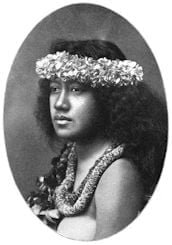It is becoming more and more a matter of regret that a larger amount of systematic effort was not established in early years for the gathering and preservation of the folklore of the Hawaiians. The world is under lasting obligations to the late Judge Fornander, and to Dr. Rae before him, for their painstaking efforts to gather the history of this people and trace their origin and migrations; but Fornanders work only has seen the light, Dr. Raes manuscript having been accidentally destroyed by fire.
The early attempts of Dibble and Pogue to gather history from Hawaiians themselves have preserved to native and foreign readers much that would probably otherwise have been lost. To the late Judge Andrews we are indebted for a very full grammar and dictionary of the language, as also for a valuable manuscript collection of meles and antiquarian literature that passed to the custody of the Board of Education.
There were native historians in those days; the newspaper articles of S. M. Kamakau, the earlier writings of David Malo, and the later contributions of G. W. Pilipo and others are but samples of a wealth of material, most of which has been lost forever to the world. From time to time Prof. W. D. Alexander, as also C. J. Lyons, has furnished interesting extracts from these and other hakus.

The Rev. A. O. Forbes devoted some time and thought to the collecting of island folk-lore: and King Kalakaua took some pains in this line also, as evidenced by his volume of Legends and Myths of Hawaii, edited by R. M. Daggett, though there is much therein that is wholly foreign to ancient Hawaiian customs and thought. No one of late years had a better opportunity than Kalakaua toward collecting the meles, kaaos, and traditions of his race; and for purposes looking to this end there was established by law a Board of Genealogy, which had an existence of some four years, but nothing of permanent value resulted there from.
Fornanders manuscript collection of meles, legends, and genealogies in the vernacular has fortunately become, by purchase, the property of the Hon. C. R. Bishop, which insures for posterity the result of one devoted scholars efforts to rescue the ancient traditions that are gradually slipping away; for the haku meles (bards) of Hawaii are gone. This fact, as also the Hawaiian Historical Societys desire to aid and stimulate research into the history and traditions of this people, strengthens the hope that some one may yet arise to give us further insight into the legendary folk-lore of this interesting race.
- A Visit to Spirit Land or The Strange Experience of a Woman in Kona, Hawaii
- Ahuula, A legend of Kanikaniaula and the First Feather Cloak
- Ai Kanaka
- Aiai, Son of Ku-ula
- Battle of the Owls
- Fish Stories and Superstitions
- Hiku and Kawelu
- Kaala and Kaaialii, A Legend of Lanai
- Kahalaopuna, Princess of Manoa
- Kalelealuaka
- Kaliuwaa
- Kaneaukai
- Kapeepeekauila or the Rocks of Kana
- Ku-ula the Fish God of Hawaii
- Legends Resembling Old Testament History
- Location of the Lau o Milu
- Lonopuha or Origin of the Art of Healing in Hawaii
- Moke Manu’s Account
- Oahunui
- Pele and Kahawali
- Pele and the Deluge
- Snaring the Sun
- Stories of the Menehunes
- The Origin of Fire
- The Punahou Spring
- The Shark-Man, Nanaue
- The Tomb of Puupehe
- This Land is the Sea’s
In response to repeated requests, the compiler now presents in book form the series of legends that have been made a feature of The Hawaiian Annual for a number of years past. The series has been enriched by the addition of several tales, the famous shark legend having been furnished for this purpose from the papers of the Hawaiian Historical Society.
The collection embraces contributions by the Rev. A. O. Forbes, Dr. N. B. Emerson, J. S. Emerson, Mrs. E. M. Nakuina, W. M. Gibson, Dr. C. M. Hyde, and others, all of whom are recognized authorities.
